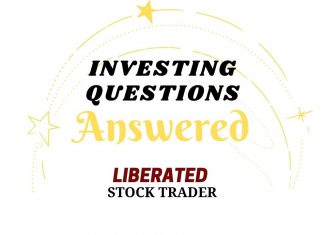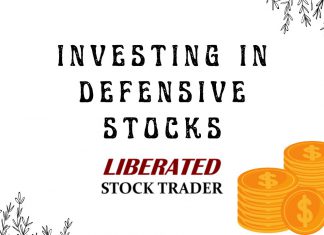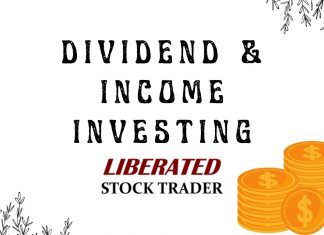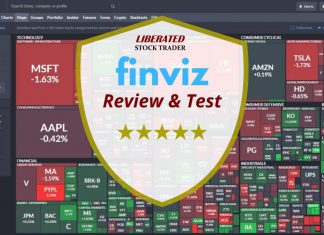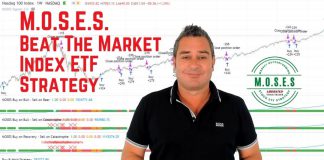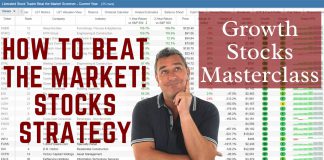Debt-to-Capital Ratio: Understanding Financial Leverage
The debt-to-capital ratio measures a company's financial stability and leverage by comparing its total debt to its capital base, including debt and equity. It provides insight into what proportion of a company's operations is financed by debt versus shareholders' equity.
Understanding the Net Profit Ratio for Better Investing
The Net Profit Ratio is a key financial ratio for better investing, telling us how efficiently a company generates profit compared to its revenue and competitors.
How to Calculate Intrinsic/Fair Value of Stocks + Excel Calculator
To calculate the intrinsic value of a stock, estimate a company's future cash flow, discount it by the compounded inflation rate, and divide the result by the number of shares outstanding. The result is a stock's fair value.
What is Stock Float: How to Find, Calculate & Trade Float
Stock float is the number of shares available to trade in the public market. This includes all shares held by institutional and retail investors and restricted stock owned by insiders. Float can impact a stock's trading volume, price movements, and volatility.
Times Interest Earned Ratio: Explaining Solvency & Risk
The Times Interest Earned Ratio, or TIE, is a financial metric for gauging a company's ability to settle its interest obligations. By assessing the number of times a company could theoretically cover its interest payments with its current pretax earnings, it offers a clear view of financial health, particularly regarding solvency and risk.
Total Asset Turnover: Understanding Business Efficiency
Total asset turnover is a financial metric used to assess a company's efficiency in using its assets to generate sales. It is a vital ratio for investors and analysts seeking to understand how well a company utilizes its asset base to produce revenue.
Economic Value Added (EVA) Explained: Shareholder Value
Economic value added, or EVA is a sophisticated measure for assessing a company's financial performance and creating shareholder wealth by measuring the residual income after deducting the cost of capital.
102-18 Cash Flow Statement Explained with Examples & Ratios
Cash flow is the lifeblood of a company, and the cash flow statement shows how much money was generated and spent during a given period, which makes it invaluable for investors looking to invest in a company.
What is CANSLIM Investing & Does It Work? I Test It!
CANSLIM is an active investment strategy that utilizes specific screening criteria such as earnings, market leadership, product innovation, institutional ownership, and stock price trends. These key criteria play a vital role in the process of stock selection.
Stock Market Beginner’s Guide [2024 Elite Investor Edition]
Understanding stock market basics is a crucial first step for beginners. Understanding exchanges, indexes, buy-and-hold, and diversification is a good start. Risks, rewards, and goals are key to a solid foundation. Finally, charts, patterns, and indicators are the investor's toolbox.
Accounts Payable Turnover Ratio: Understanding Business Liquidity
The accounts payable turnover ratio quantifies how often a company pays off its suppliers within a specific period. To calculate it, one divides the total purchases made on credit by the average accounts payable for the same period.
Price Floors in Economics: Understanding Minimum Prices
A price floor is a government-imposed limit on how low a price can be charged for a product, service, or commodity. This is designed to ensure the price stays high enough to protect the interests of producers, often at a point above the natural market equilibrium where supply equals demand.
Find Great Defensive Stocks with Ben Grahams Protection Strategy
The best way to find defensive stocks is by using Benjamin Graham's timeless rules for the defensive investor: Stability, earnings, dividends, price-to-book ratio, and the price-to-Graham number.
P/E Ratio: Use the Price to Earnings Ratio Like a Pro...
The Price to Earnings Ratio is a commonly misunderstood calculation for determining a company's relative value. The PE Ratio is only useful for comparing companies in the same industry with similar business models. It should not be used to compare radically different businesses.
Long-Term Debt Ratio: Understanding Financial Stability
The Long-term debt ratio is a financial metric investors use to assess a company's use of long-term debt for financing its operations. A high long-term debt ratio over 25% indicates a higher investing risk, whereas a low ratio indicates a company is in better financial shape.
Fixed Charge Coverage Ratio: Key Insights for Investors
FCCR is a financial metric determining how well a business can cover its fixed charges with its operating income. It is calculated by dividing Earnings Before Interest and Taxes (EBIT) by fixed charges. Fixed charges typically include expenses such as interest expense and lease payments.
Payout Ratio: Understanding Dividend Income Sustainability
The payout ratio, also known as the dividend payout ratio, is a critical financial metric that investors use to evaluate the sustainability of a company's dividend payments.
Operating Profit Margin: Formula & Tips for Investors
Operating Profit Margin, often represented as a ratio or percentage, reflects the proportion of revenue after accounting for the costs and expenses associated with a company's primary operations.
Income Elasticity Explained: Consumer Behavior in Economics
Income elasticity of demand is an economic measure showing how demand responds to consumer income changes. This metric helps businesses and economists understand how economic changes affect the demand for goods.
Finviz Stock Screener Review 2024: Free vs. Elite Tested
Our Finviz review reveals an excellent free service, with effective heatmaps and fast stock screening with integrated chart pattern recognition. Finviz Elite is good value for $299/y on an annual subscription, with backtesting and real-time data.
Our Best Training & Strategies
Liberated Stock Trader Pro: Learn Stock Market Investing
Learn stock market investing with the complete online stock trading course by Barry D. Moore, a certified financial analyst from the International Federation of Technical Analysts (IFTA).
ETF Investing Strategy: MOSES Improves Performance & Lowers Risk
The MOSES ETF investing strategy is a powerful suite of indicators meticulously backtested over 100 years. Designed to empower you to outperform the market, it equips you with the tools to navigate major stock market crashes and unlock greater investing performance.
LiberatedStockTrader’s Strategy Beat the Market By 102%
Decades of research and testing unveiled the Liberated Stock Trader Beat the Market System. Our 9-year, backtested, and proven strategy targets 35 financially healthy high-growth stocks, producing a track record of beating the S&P 500 by 102%.

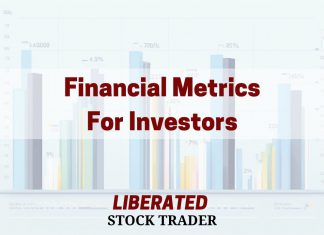
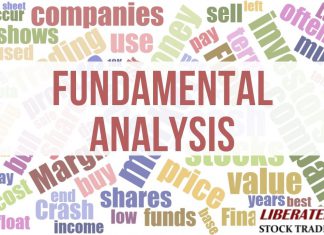
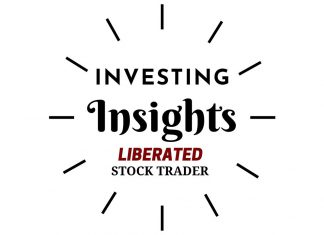
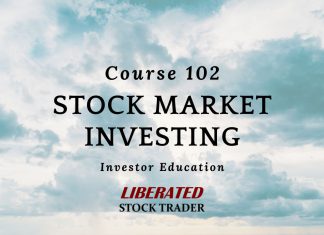
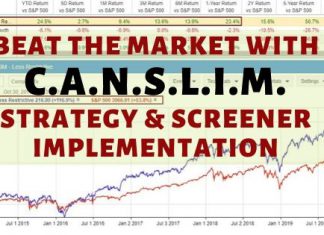
![Stock Market Beginner’s Guide [2024 Elite Investor Edition] Stock Order Types: Using Market, Limit & Trailing Stops in Trading](https://www.liberatedstocktrader.com/wp-content/uploads/2022/04/stock-trading-answers-324x235.jpg)
